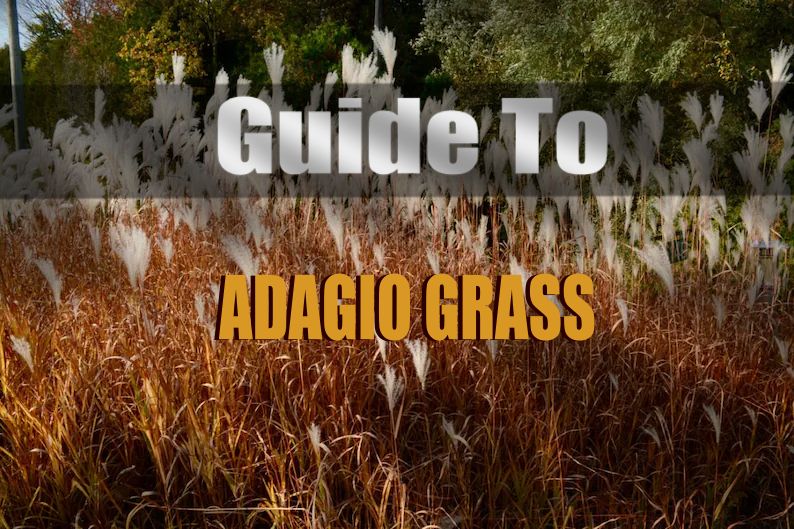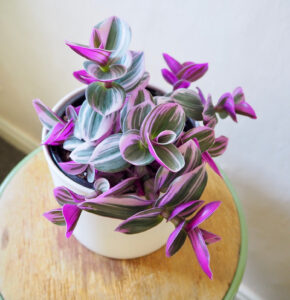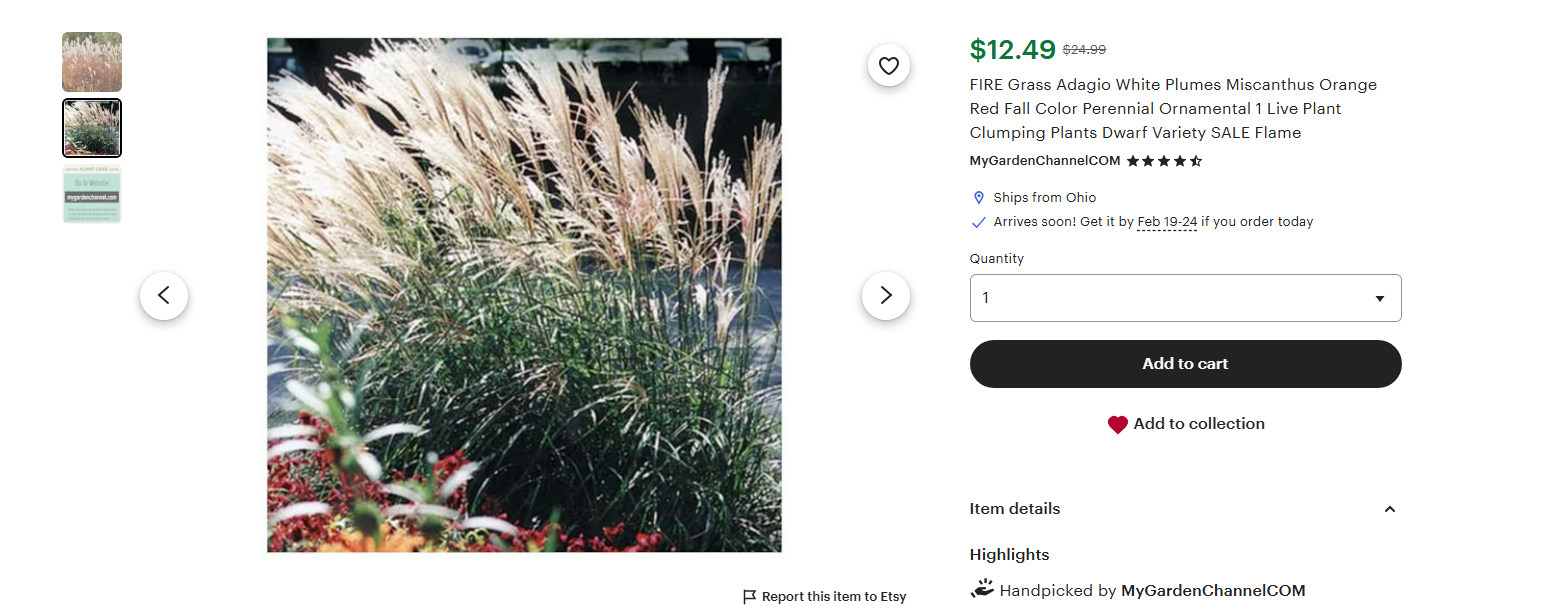Adagio grass (Miscanthus sinensis ‘Adagio’) is a popular ornamental grass known for its elegant appearance, hardiness, and versatility in landscapes. This grass is widely admired for its fine-textured foliage, graceful arching habit, and feathery plumes that add movement and interest to gardens throughout the year. Whether used as a focal point, a privacy screen, or a border plant, Adagio grass enhances the aesthetic appeal of any landscape. This guide delves into the details of growing, caring for, and maintaining Adagio grass to ensure its healthy development.
Adagio Grass
Adagio grass belongs to the Miscanthus sinensis species, commonly known as maiden grass. This cultivar is prized for its compact size and adaptability to various climates. It grows in dense, rounded clumps, reaching about 3 to 4 feet in height and 4 to 5 feet in width. In late summer to early fall, Adagio grass produces feathery, reddish-pink plumes that gradually fade to a silvery-white, adding seasonal interest to the landscape.
Growth Characteristics
- Height: 3-4 feet tall (5 feet with plumes)
- Width: 4-5 feet
- Foliage Color: Silver-green, turning golden in fall
- Plume Color: Reddish-pink fading to white
- Growth Rate: Moderate to fast
- Lifespan: Long-lived perennial
Climate and Hardiness
Adagio grass thrives in USDA hardiness zones 5-9, making it suitable for a wide range of climates. It is both drought-tolerant and resistant to most pests and diseases, making it a low-maintenance choice for gardeners. It can withstand cold winters, though it may die back to the ground before regrowing in spring.
2. Site Selection and Soil Preparation
Selecting an appropriate site and preparing the soil properly are crucial steps in ensuring the healthy growth of Adagio grass.
Sunlight Requirements
Adagio grass thrives in full sun, requiring at least six hours of direct sunlight per day. While it can tolerate partial shade, its growth may be less vigorous, and flowering may be reduced.
Soil Preferences
This ornamental grass is highly adaptable to different soil types, but it performs best in well-drained, moderately fertile soil. The ideal soil pH ranges from 5.5 to 7.5.
Drainage Considerations
Good drainage is essential for preventing root rot. If planting in clay-heavy soil, consider amending it with organic matter, sand, or compost to improve aeration and drainage.
3. Planting Adagio Grass
Proper planting techniques help establish strong root systems, ensuring the longevity of the plant.
Best Time to Plant
The best time to plant Adagio grass is in spring or early fall when temperatures are moderate, allowing roots to establish before extreme weather conditions set in.
Spacing and Depth
- Space plants 3 to 5 feet apart to accommodate their mature width.
- Dig a hole twice as wide as the root ball but no deeper than the plant’s original container depth.
- Loosen the soil at the bottom of the hole to encourage root penetration.
- Water thoroughly after planting to settle the soil around the roots.
4. Watering and Moisture Management
Although Adagio grass is drought-tolerant once established, proper watering is essential in the early stages.
Watering Frequency
- Newly planted grass: Water deeply 2-3 times per week for the first month.
- Established plants: Water once a week during dry periods.
- Rainfall dependence: Supplemental watering is rarely needed if rainfall is sufficient.
Overwatering Risks
Avoid excessive watering, as consistently soggy soil can lead to root rot. Ensure that the soil dries out slightly between watering sessions.
5. Fertilization and Soil Nutrition
Adagio grass does not require heavy fertilization but benefits from occasional feeding to promote healthy growth.
Best Fertilizer Type
- Use a balanced fertilizer (10-10-10) or a slow-release formula in early spring.
- Organic options like compost or well-rotted manure enhance soil health.
Fertilization Schedule
- Apply fertilizer in early spring as new growth emerges.
- A second application in mid-summer can boost vigor but is optional.
- Avoid late-season fertilization to prevent excessive growth before winter dormancy.
6. Pruning and Maintenance
Regular maintenance ensures Adagio grass remains attractive and healthy year after year.
Pruning Timing
- Cut back the previous season’s growth in late winter or early spring before new shoots emerge.
- Use sharp shears or hedge trimmers to trim the grass to about 6 inches from the ground.
Dividing Clumps
Over time, Adagio grass may become dense and require division to maintain vigor.
- Divide every 3-5 years in early spring.
- Dig up the clump and separate it into smaller sections.
- Replant the divisions in well-prepared soil.
7. Pest and Disease Management
Adagio grass is highly resistant to pests and diseases, but occasional issues may arise.
Common Pests
- Aphids: Small, sap-sucking insects that can weaken the plant. Control with insecticidal soap or natural predators like ladybugs.
- Grasshoppers: Can chew on foliage but rarely cause significant damage.
Common Diseases
- Rust: A fungal disease that causes orange or brown spots on leaves. Improve air circulation and avoid overhead watering to prevent it.
- Root Rot: Caused by excessive moisture. Ensure well-draining soil and avoid overwatering.
8. Winter Care and Seasonal Considerations
Adagio grass provides visual interest throughout the winter but requires some preparation to ensure its longevity.
Mulching for Protection
In colder regions, apply a 2-3 inch layer of mulch around the base to protect roots from freezing temperatures.
Leaving Foliage for Winter Interest
Many gardeners leave the dried foliage standing through winter to provide texture and movement in the landscape before cutting it back in early spring.
9. Landscaping Ideas for Adagio Grass
Adagio grass is a versatile plant that enhances various landscape designs.
Border and Foundation Planting
Its compact size makes it ideal for defining borders or softening the edges of buildings and walkways.
Mass Planting and Privacy Screens
Planted in groups, Adagio grass creates a stunning visual effect and can serve as a natural screen.
Erosion Control
Its deep, fibrous roots help stabilize slopes and prevent soil erosion.
Watermelon Peperomia (Peperomia argyreia) Care Guide
Introduction Watermelon Peperomia (Peperomia argyreia) is a delightful houseplant beloved for its unique, showy foliage. Named for its striking leaves that resemble watermelon rinds—oval-shaped with silver and dark green stripes—thisRead More
Waikiki Elephant Ear (Colocasia ‘Waikiki’) Care Guide
Introduction The Waikiki Elephant Ear is a showstopping tropical plant prized for its striking foliage. A cultivar of Colocasia esculenta, ‘Waikiki’ stands out with large, heart-shaped leaves in deep green,Read More
Violet Primrose (Primula spp.) Care Guide
Introduction to Violet Primrose The violet primrose is a delightful early-blooming perennial belonging to the Primula genus, which includes over 500 species. Known for their cheerful blossoms and delicate foliage,Read More
Violet Hollyhock Care Guide
Introduction to Violet Hollyhock (Alcea rosea) Violet Hollyhock, scientifically known as Alcea rosea, is a striking perennial flower that is beloved by gardeners for its tall, stately stems and large,Read More
Vinca ‘Wojo’s Gem’ Care Guide
Vinca ‘Wojo’s Gem,’ also known as Periwinkle or Madagascar Periwinkle, is a popular ornamental plant admired for its attractive, glossy foliage and vibrant flowers. It is a hybrid variety ofRead More
Care Guide for Variegated White Lighting Crown of Thorns (Euphorbia milii)
The Variegated White Lighting Crown of Thorns (Euphorbia milii), also known as the Crown of Thorns plant, is a stunning, hardy succulent that produces vibrant flowers and can thrive inRead More



